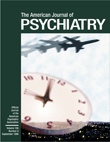New Behavioral Approach to Trichotillomania
Ms. A was a 17-year-old adolescent with a history of low self-esteem, depression, anxiety, and hair pulling. She was described as a perfectionist and a loner. She reported hair pulling because of nervousness but was concerned about the way it affected her looks. She was treated with paroxetine, 30 mg/day, and clomipramine, 100 mg at bedtime. Her depression improved, but her hair pulling continued. One day, her mother asked her to pull the weeds in their flower beds. She noticed being fascinated by pulling each weed and looking at its roots. When she pulled her hair, she noted that her hair also had roots. She reported feeling relief by pulling weeds. In a few weeks, she stopped pulling her hair, which started growing back, and realized that her nervousness was calmed by pulling weeds instead of her hair.Anna was a 9-year-old child who was admitted to an inpatient hospitalization program. Her main complaint was, “I am pulling my hair out.” Her head was bald, and she was isolated from other children. A mental status examination showed depressed mood and hostile behavior. She was treated with fluoxetine, 20 mg/day. Encouraged by Ms. A, she was advised to practice weed pulling at home. After 3 months of outpatient visits, her condition showed improvement, and her hair started growing. Anna reported that feeling the roots of the weeds made her less tense and reduced the urge to pull her hair.Ms. C was a 23-year-old woman treated on an outpatient basis for trichotillomania. She presented with severe depression related to the divorce of her parents and reported pulling her hair out and creating balding areas on a regular basis since the age of 12. She was placed on a regimen of clomipramine, 50 mg/day. Encouraged by Ms. A and Anna, Ms. C was advised to practice weed pulling. Also, as with these two patients, Ms. C began to show significant improvement after the initiation of medication and habit substitution.
References
Information & Authors
Information
Published In
History
Authors
Metrics & Citations
Metrics
Citations
Export Citations
If you have the appropriate software installed, you can download article citation data to the citation manager of your choice. Simply select your manager software from the list below and click Download.
For more information or tips please see 'Downloading to a citation manager' in the Help menu.
View Options
View options
PDF/EPUB
View PDF/EPUBGet Access
Login options
Already a subscriber? Access your subscription through your login credentials or your institution for full access to this article.
Personal login Institutional Login Open Athens loginNot a subscriber?
PsychiatryOnline subscription options offer access to the DSM-5-TR® library, books, journals, CME, and patient resources. This all-in-one virtual library provides psychiatrists and mental health professionals with key resources for diagnosis, treatment, research, and professional development.
Need more help? PsychiatryOnline Customer Service may be reached by emailing [email protected] or by calling 800-368-5777 (in the U.S.) or 703-907-7322 (outside the U.S.).

